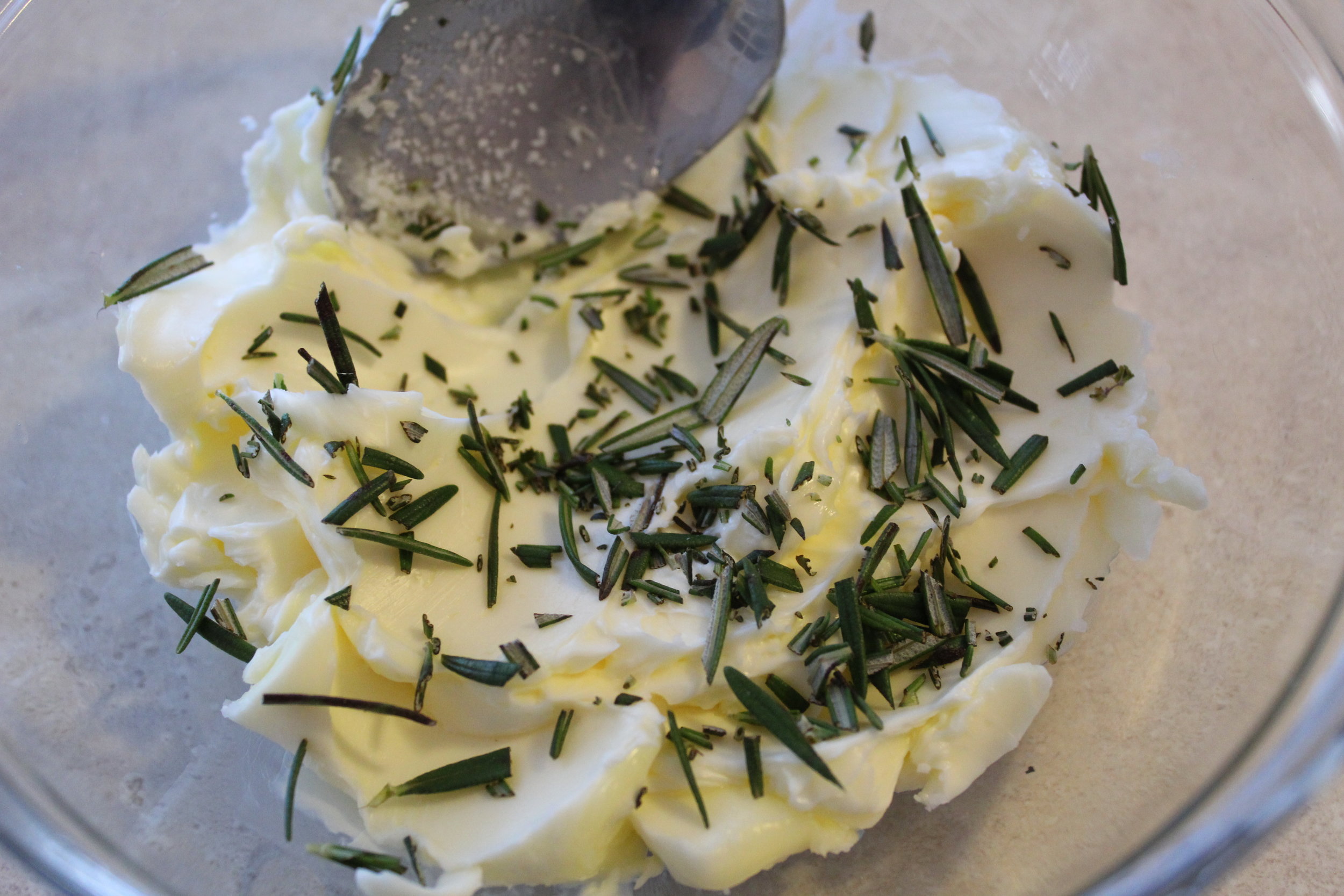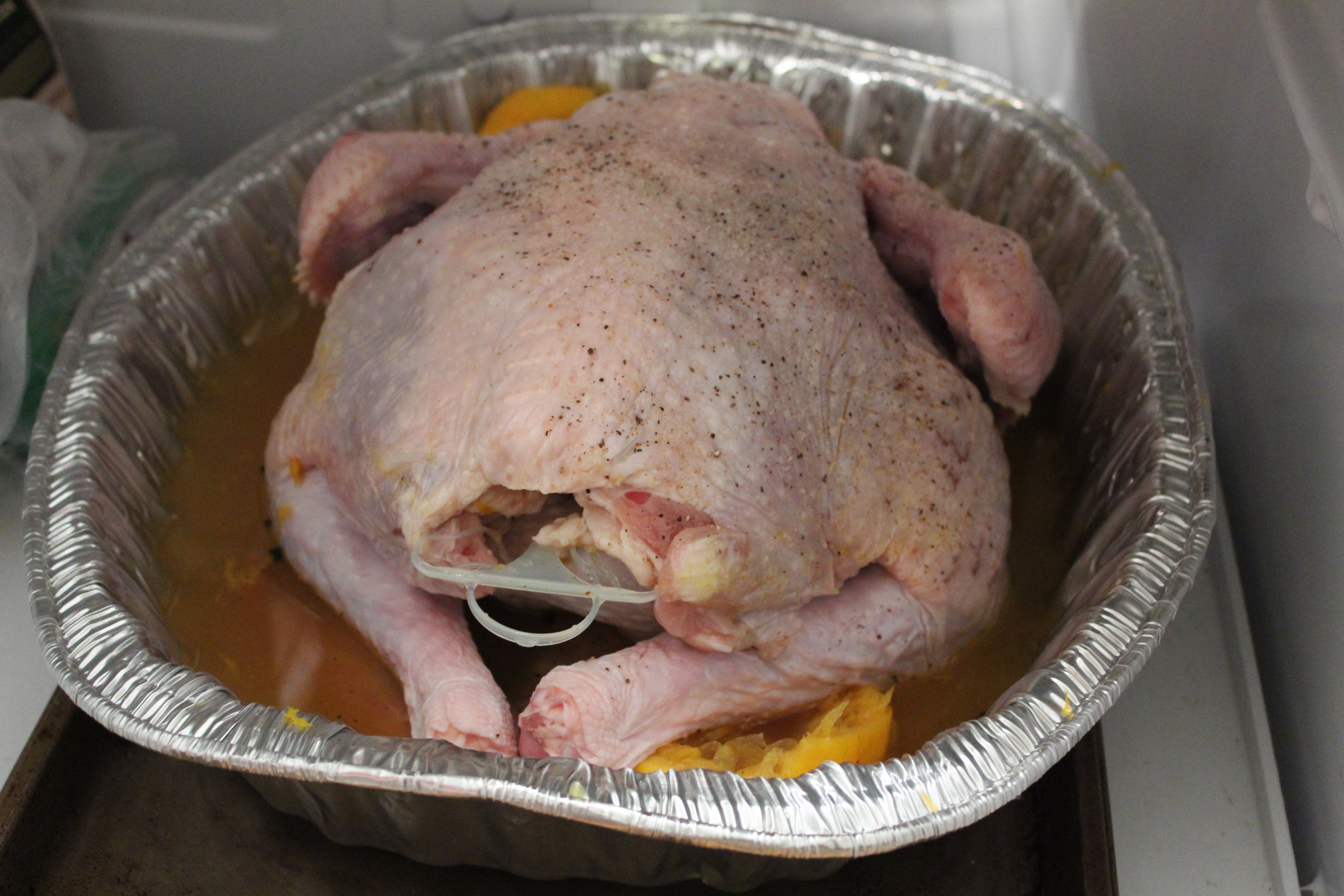It’s Cyber Monday today. I’m still working on finalizing my holiday gift shopping for family and friends. I always thought the best deals would be on Black Friday of each year, but I’m beginning to notice Cyber Monday has its own deals and sometimes even better deals. The unpredictable discounts make it difficult for me to time exactly when to get gifts for the best prices. I took a break from online browsing/shopping to work on this post about my Thanksgiving turkey. Last Thursday, I roasted a whole turkey for Kevin and I to enjoy over Thanksgiving. I tried to find the smallest possible turkey at the store since it was only Kevin and I for Thanksgiving. The smallest turkey I was able to find was 13 pounds, which was still relatively large for two people. Be it as it may, I went ahead and purchased the turkey. On Wednesday morning before Thanksgiving, I left the turkey to defrost in the sink. On Wednesday evening, I removed the giblets and other innards from the turkey, brined the turkey in a combination of vegetable stock, freshly squeezed orange juice, whole peppercorns and lots of kosher salt. I learned the trick of adding an orange from a friend in college. It really does add a hint of citrus and sweetness to the turkey. Instead of using a bucket (which we did not have), I used a large foil pan for brining. Our refrigerator was on the smaller side so I ended up brining half of the turkey flipped over (with the breasts facing downward). My logic was since I will be roasting the turkey breasts side up the next day, the juices will naturally gravitate towards the bottom and keep the entire turkey moist. I also had some leftover rosemary compound butter and fresh rosemary sprigs in the refrigerator so I incorporated both into my roast turkey. This was one of the simplest roast turkey I ever made and it turned out golden brown and juicy.
Roasted Turkey with Rosemary Butter
· 13-pound frozen whole turkey, innards removed
· 2 teaspoons kosher salt
· 1 teaspoon freshly cracked black pepper
· 1 whole orange, zested and juiced (keep the orange rinds for brining)
· Two 32-ounce cartons of vegetable stock
· 6-8 whole black peppercorns
· 2 teaspoons kosher salt
· 1 teaspoon freshly cracked black pepper
· 1 small onion, ends and outer layer removed
· 1 sprig of fresh rosemary
· Rosemary Compound butter
Rosemary Compound Butter:
· ½ cup (1 stick) unsalted butter, softened
· ½ teaspoon kosher salt
· 1 sprig rosemary, roughly chopped
To make the rosemary compound butter, combine all of the ingredients in a bowl. Pour the contents of the bowl onto two pieces of plastic wrap layered on top of one another. Roll the plastic wrap and form the butter into a log. Chill the compound butter in the refrigerator for at least 30 minutes before using.
Directions:
1) Day before Thanksgiving: In the morning, take the turkey out of the refrigerator and let it defrost in the sink. In the evening, remove the innards from the turkey. Salt the turkey with the 2 teaspoons of kosher salt. Add the teaspoon of freshly cracked black pepper and orange zest. Set aside. Place a large foil pan on a large baking sheet. Set aside. Prepare the brine for the turkey by combining the orange juice and rinds, vegetable stock, and peppercorns in the large foil pan. Flip the turkey so the breasts are facing down and place the turkey in the foil pan with the brine. Place the foil pan and baking sheet with the turkey on the lowest part of the refrigerator.
2) Thanksgiving Day: Preheat oven to 425°F. Pour out the brine and rinse off the turkey. Salt the turkey with 2 teaspoons of kosher salt. Add the teaspoon of freshly cracked black pepper. Place the turkey on a roasting rack, breasts facing up. Stuff the turkey with the small onion and the sprig of fresh rosemary. Take the rosemary compound butter out from the refrigerator and slice into ¼ inch thick pieces. Tuck a few pieces of the butter between the thighs, wings, and inside the turkey. Rub the remaining pieces all over the outside of the turkey and under the skin of the turkey. Truss (or tie) the legs of the turkey together.
3) Roast the turkey at 425°F for the first hour. Reduce the temperature of the oven to 350°F and continue roasting for another 1½–2 hours, until the turkey is cooked through and golden brown. Remove the turkey from the oven. Let the turkey rest for an hour before carving and serving.
Takeaways: I checked on the doneness of the turkey after 2½ hours. The turkey did come with an indicator. I ended up leaving the indicator in the turkey when roasting. I’ve heard the indicator isn’t actually a good indicator of when the turkey has cooked to perfection, but I like to keep it as a backup just in case. The indicator on my turkey popped up at around 2 hours and 45 minutes of cooking. If you have a food thermometer, you can check for doneness by inserting the food thermometer into the thickest part of the turkey and checking to make sure the internal temperature has reached at least 165°F, as recommended by the USDA. I carved my turkey by removing the wings, the drums, thighs, breasts, and shredding the rest of the turkey. I used the pan drippings to make gravy by heating the pan over medium-low heat, adding some flour, vegetable stock and cooked until a smooth gravy formed. I also saved the turkey carcass to make turkey noodle soup the next day, which I learned from the mom of my college friend, Annie.











